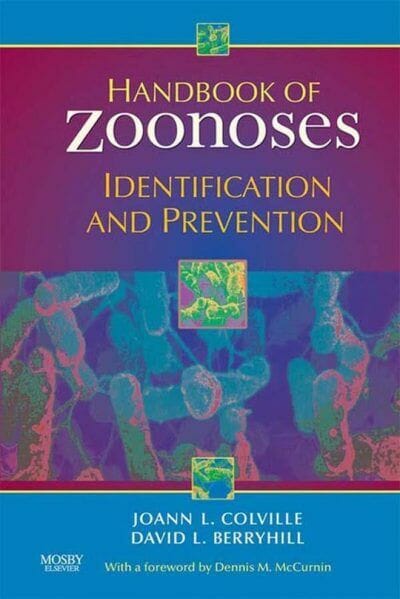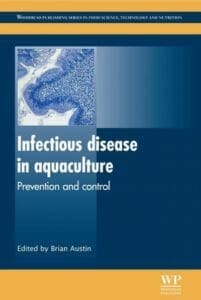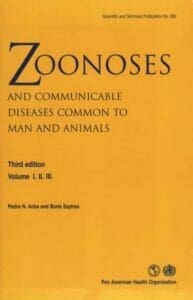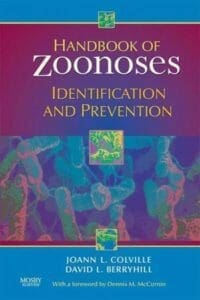Handbook of Zoonoses: Identification and Prevention

By Joann Colville
Handbook of Zoonoses: Identification and Prevention Book PDF provides clear, accurate coverage of zoonoses ― diseases that can spread from animals to humans. The consistent format helps you quickly locate key information, such as how each disease affects the host, how it is spread, how it is treated, and necessary safety precautions. It also discusses the importance of educating animal owners about the public health implications of zoonoses and how to prevent them from spreading.
- Clear, concise coverage helps you respond quickly when presented with diseases that could potentially spread between patients, clients, and staff in the veterinary clinic.
- Each disease entry begins with a chart of its potential morbidity (the rate of incidence of a disease) and mortality (death rate), giving you at-a-glance access to the chance of contracting the disease and the severity of the disease if contracted.
- Clinically relevant coverage includes information on the etiology (bacterial, viral, parasitic, etc.), most common nonhuman hosts, transmission modes, course of the disease, clinical signs in animals and humans, diagnostic tests, prevention, and general advice.
- Essential information on preventing the spread of disease helps you educate clients about how to protect themselves and their animals from zoonoses.
- Coverage of diseases such as mad cow disease, West Nile virus, rabies, and anthrax, prepares you to answer client questions about diseases that are in the public eye.
Get This Book
This Book is Available For Premium Members Only













![Ettinger’s Textbook of Veterinary Internal Medicine 9th Edition [PDF+Videos] Ettinger’s Textbook of Veterinary Internal Medicine 9th Edition [True PDF+Videos]](https://www.vet-ebooks.com/wp-content/uploads/2024/10/ettingers-textbook-of-veterinary-internal-medicine-9th-edition-100x70.jpg)

![Textbook of Veterinary Diagnostic Radiology 8th Edition [PDF+Videos+Quizzes] Thrall’s Textbook of Veterinary Diagnostic Radiology, 8th edition PDF](https://www.vet-ebooks.com/wp-content/uploads/2019/09/textbook-of-veterinary-diagnostic-radiology-8th-edition-100x70.jpg)






